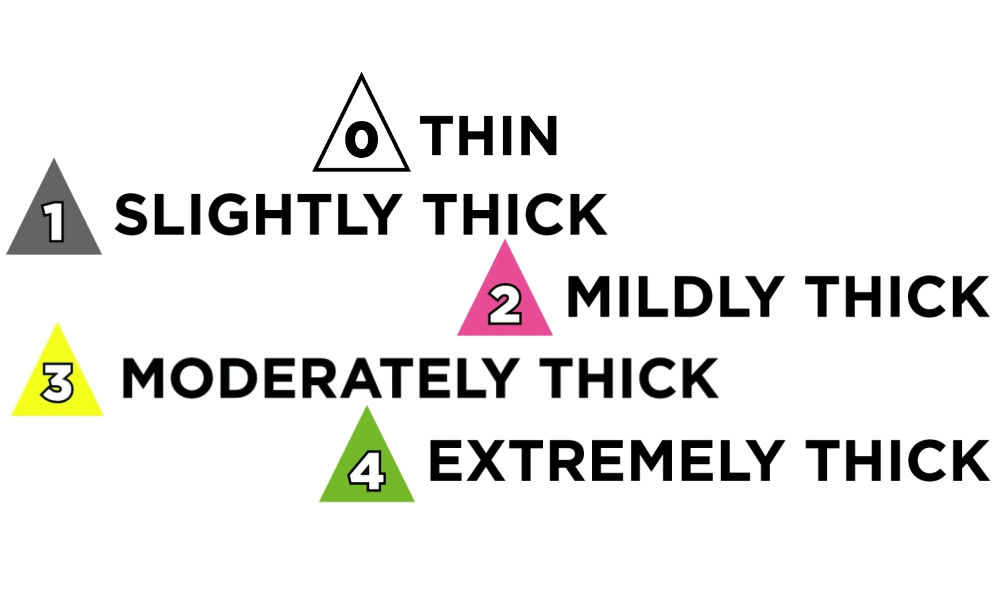In this short article we outline the rationale behind the IDDSI Framework and describe it’s drink thickness levels.
IDDSI Framework
The International Dysphagia Diet Standardisation Initiative, known as IDDSI, was formed in 2012 by a team of volunteers from around the world and from diverse professions. These include nutrition, dietetics, medicine, speech pathology, occupational therapy, nursing, patient safety, engineering, food science and technology.
It’s aim was to develop international standardised terminology and definitions for texture modified foods and thickened liquids for people with dysphagia. An important part of that aim was to ensure the Framework would be usable by people with dysphagia, their caregivers, clinicians, food service professionals and industry partners from all cultures.
IDDSI conducted a review of existing standards, available evidence and collaborative efforts from stakeholder groups over three years and published the Framework in November 2015. It is designed to be culturally sensitive, measureable and applicable to individuals of all age groups in all care settings.
The IDDSI Framework consists of a continuum of 8 levels. Each level is defined by a number, name, colour and description. Drinks are measured from Levels 0-4, while foods are measured from Levels 3-7. The following information about drink Levels 0-4 is copied from the Framework1.

Description/Characteristics of Level 0 THIN
- Flows like water
- Fast Flow
- Can drink through any type of teat/nipple, cup or straw as appropriate for age and skills
Physiological rationale for this level of thickness
Functional ability to safely manage liquids of all types.

Description/Characteristics of Level 1 SLIGHTLY THICK
- Thicker than water
- Requires a little more effort to drink than thin liquids
- Flows through a straw, syringe , teat/nipple
- Similar to the thickness of commercially available “Anti-regurgitation” (AR) infant formula
Physiological rationale for this level of thickness
Predominantly used in the paediatric population as a thickened drink that reduces speed of flow yet is still able to flow through an infant/nipple. Consideration to flow through a teat/nipple should be determined on a case-by-case basis.

Description/Characteristics of Level 2 MILDLY THICK
- Flows off a spoon
- Sippable, pours quickly from a spoon, but slower than thin drinks
- Effort is required to drink this thickness through standard bore straw (standard bore straw = 0.209 inch or 5.3 mm diameter)
Physiological rationale for this level of thickness
If thin drinks flow too fast to be controlled safely, these Mildly Thick liquids will flow at a slightly slower rate.

Description/Characteristics Level 3 MODERATELY THICK
- Can be drunk from a cup
- Some effort is required to suck through a standard bore or wide bore straw (wide bore straw = 0.275 inch or 6.9 mm)
Physiological rationale for this level of thickness
- If tongue control is insufficient to manage Mildly Thick drinks (Level 2), this Moderately Thick level may be suitable
- Allows more time for oral control
- Needs some tongue propulsion effort
- Pain on swallowing

Description/Characteristics of Level 4 EXTREMELY THICK
- Usually eaten with a spoon
- Cannot be drunk from a cup
- Cannot be sucked through as straw
- Shows some very slow movement under gravity but cannot be poured
Physiological rationale for this level of thickness
- If tongue control is significantly reduced, this category may be easiest to manage
- Increased residue is a risk if too sticky
- Pain on swallowing
As at May 2019, the IDDSI Framework has already been adopted in the UK and New Zealand and is being introduced into the US, Canada and Australia. It is being translated into a number of languages for worldwide implementation.
If widely adopted, the IDDSI Framework will reduce the confusion caused by so many different levels of drink thickness and descriptors currently used around the world. This was one of the problems with thickened drinks outlined in our previous article and we endorse this new Framework.
IDDSI have also devised a way to test the thickness of drinks and we will look at this IDDSI Flow Test in our next article. You can find more information on IDDSI and it’s Framework on their website.
What are your thoughts on the IDDSI Framework? Please feel free to leave a response below.
References
- © The International Dysphagia Diet Standardisation Initiative 2016 @http://iddsi.org/framework/
